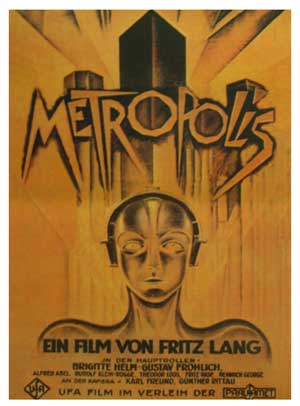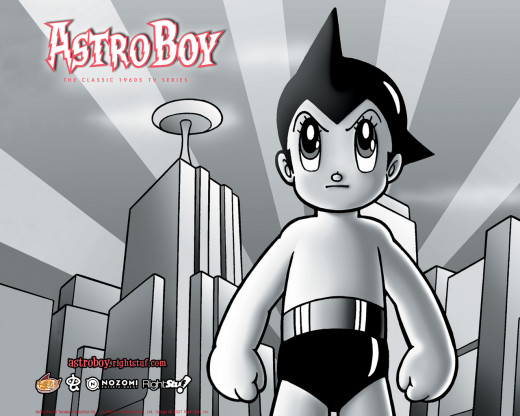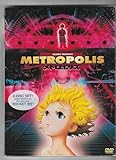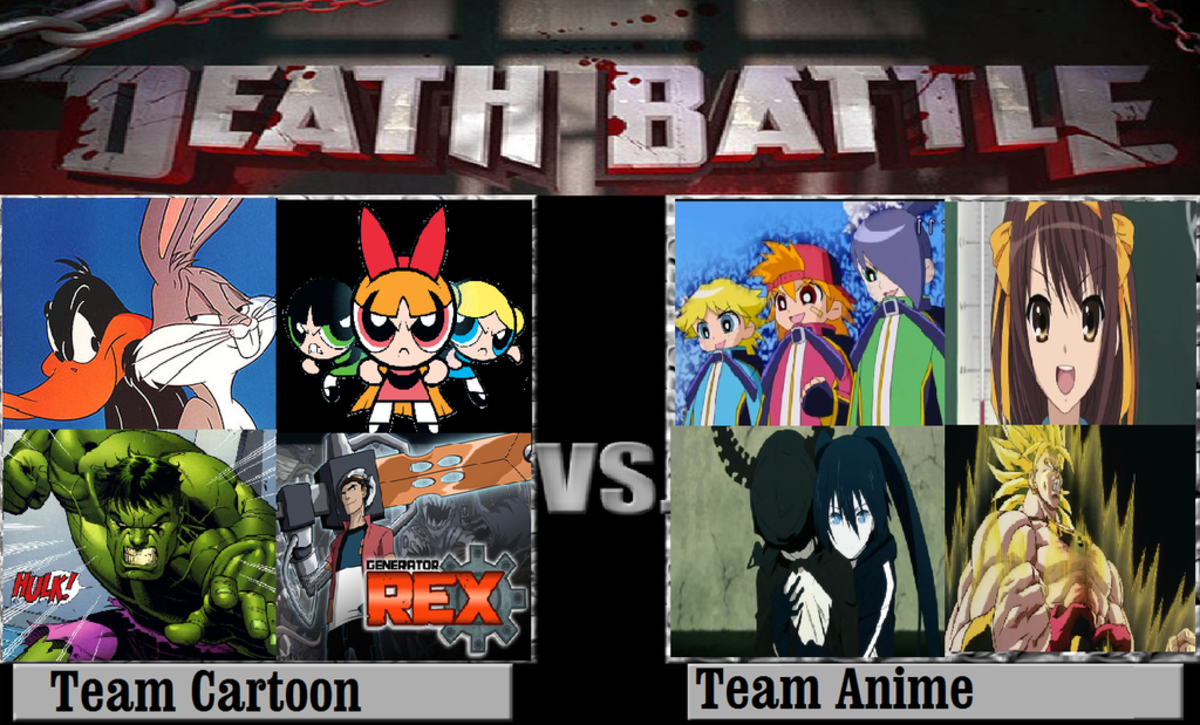Synopsis: Metropolis
Metropolis is not your usual anime movie. I mean, aside from the original language, the names of the characters, and that it apparently takes place in a futuristic Japan, there is very little Japanese about this movie.
Osamu Tezuka's Metoroporisu (simply translated to Metropolis for English Audiences) is about young Kenichi visiting the city of Metropolis in Japan with his private investigator uncle from Tokyo. They had been tracking a criminal who had been working for the most powerful man in the world.
The city of Metropolis is a very class concious city, with Robots doing much of the work underground, and never being allowed above ground (with the special exception of Police robots, who serve as investogators but are forbiden to make arrests).
After Kenichi is seperated from his uncle, he befriends a young girl named Tima, who also is the "daughter" of the said powerful man: Duke Red. By chance, she is also a robot - created to sit atop the throne of the Ziggurat built as an ode to Red's power, from which she can become queen of all the robots. And he who controls the production and the labor control the world.

The History of Metropolis
Does the plot sound familiar? If so, It's because the storyline of the film (and the graphic novel it was based upon) stems from a 1927 German film of the same name. In the film, Metropolis is also divided into two classes. The Privileged, who live atop the "Babel Tower" and the working class who worked and lived below ground, and are actually responsible for the workings of the city.
In it, the son of the wealthy owner of Babel falls in love with a young working class girl. The owner of Babel, upset at this news, designs a robot that looks like the girl in every way, in order to stir up a riot and annihilate the working class altogether.
Both films deal with the subject of class conscience and that the divide between two groups of people is never so great that it cannot be crossed by love. While this is no Romeo and Juliet, it is a pleasant anime to watch by yourself or with your family - I would recommend that younger children go to bed early before watching this though.
Oh, and don't forget the tissues. They just may come in handy.

A History of Tezuka the Pacifist
Tezuka was born in 1929, and was a young child during World War II, in which Japan was a member of the Axis powers, along with Germany and Italy. While it's uncertain how much German and Japanese propaganda influenced him (Metropolis was his first major work, published in 1949 and as noted above, was based on a pre-Nazi era WWII film), it appears to have moved him closer to a direction of pacifism.
Metropolis (1927) was a socialist-style film surrounding class struggles and ended on the note that a relationship between the laborers and wealthy owners could be achieved through peace in exactly the right conditions, as was the theme for the manga and anime adaptations. That set the trend where almost all of his works had that theme.
World War II clearly took a toll on Japan that no other country faced, and this impacted Tezuka greatly, I'm sure. His next major work Captain ATOM and Mighty ATOM, better known in the west as Astro Boy is about a robot powered by nuclear technology, yet prefers peace and fights for peace. Think of him as kind of a Japanese Superman, if you will. The fact that he was nuclear powered - hence the name "ATOM" - was important, especially in the 50's where even Japan was not immune to the effects of the cold war, and in fact, had a lot riding on the hopes of peace. After all, Japan was the only country to ever have a nuclear bomb dropped on it by enemy forces as an act of war.
On an interesting side note, Tezuka - true to his pacifistic self - created the ATOM character in response to being punched in the face by a GI.
Starting in the mid 50's and working on to his death, Tezuka's life work was called Phoenix. The tale of man's quest for immortality and the lives that are sacrificed to obtain it spans countless volumes, and while the thirteen episode anime series is beautiful, the anime is just a drop in the bathtub compared to the work and the stories Tezuka created of people throughout thousands of centuries past and future willing to do anything to find the legendary bird. And the manga is still just a drop in the ocean compared to what his final vision would have looked like.
Returning back to his WWII roots, Tezuka did a brief series called Adolf about the lives of three people during WWII that all shared that name, including the leader of the Third Reich himself. The other two being a Jew living in Kobe, Japan, and his best friend who is half-German and Half-Japanese. The lives of the three intertwine as a murder mystery unravels until the climactic events of Hiroshima (The bomb is only a small part of the climax, so no real spoilers there; you gotta read it.).
Additionally, despite being an Agnostic, Tezuka did a lengthy series on the life of Buddha. Gritty at times, especially during Gautama's early years and during his quest to obtain enlightenment and an end to suffering.
Tezuka passed away in 1989 at 60 years of age, just one month after the Shouwa Emperor Hirohito - who was also the emperor during World War II - passed away. One could say his life and works, and especially his early childhood were shaped by the frames of that dynasty.
His final words were "私は物乞いをしています、私は仕事しましょう!" or "I'm begging you, let me work!"
In addition to the works mentioned here, he wrote a total of 700 series spanning 200,000 pages, with another additional 150,000 pages of storyboards over the course of his lifetime.









